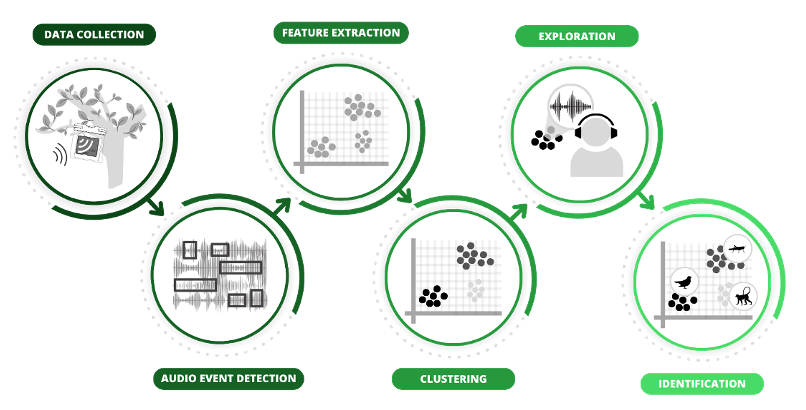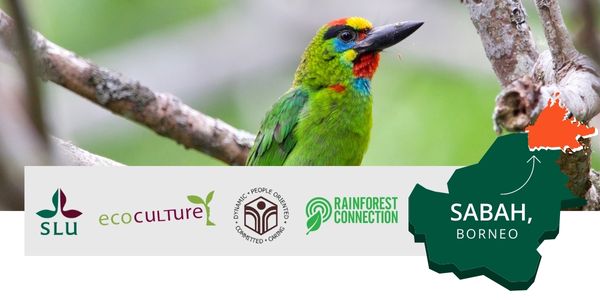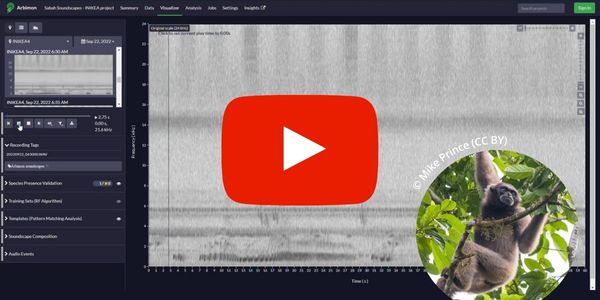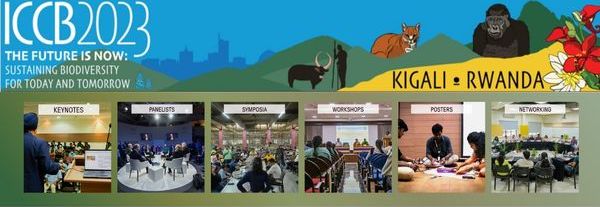Arbimon May Newsletter
Read our newsletter in Spanish, French, Portuguese, or Indonesian.
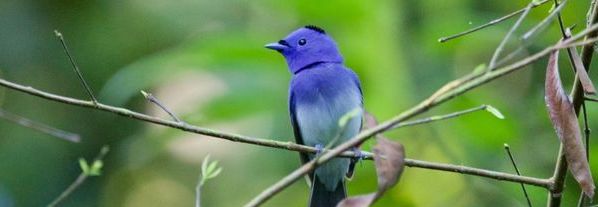
What’s new with Arbimon?
Audio Event Detection & Clustering (AED-C) pipeline!
The AED-C pipeline is an unsupervised approach for automatically detecting and categorizing sounds in large audio datasets.
The workflow consists of the following steps:
- Automated detections of audio events in raw soundscape recordings
- Acoustic features are extracted from the detected audio events
- Detections are clustered together based on similarity of acoustic features
- Resulting clusters are explored and validated by users as they identify species
Users can adjust parameters and filters at each step to tailor this pipeline to their specific use cases. AED-C provides an efficient way to quickly summarize and explore categories of sound without the need for labeled data ahead of time. This is particularly useful for discovering unknown sound categories or rare species, as well as estimating species richness and composition. After clusters are manually validated, these clips can be used as training data for more complex AI classification models such as neural networks.
For more information and details, check out our AED-C white paper! The white paper also reports our preliminary studies comparing AED-C outputs when using different parameters, using an example dataset from Panama. We have also added AED-C support pages to our Arbimon documentation to help users get started using this innovative new pipeline.
Stay tuned for a scientific publication on our AED-C pipeline in the near future!
Questions?
Review our extensive support documentation and video tutorials that provide step-by-step guidance. You can also click our help button (green ? icon in the bottom right of the Arbimon platform) for chat support.
Featured Project
Assessing Biodiversity Across Land-Use Types in Sabah
Rainforest Connection is working with the Swedish University of Agricultural Sciences (SLU), Sabah Foundation, and Ecoculture‘s Borneo team to assess biodiversity across land-use types within the INIKEA Sow-a-Seed initiative. The initiative aims to develop and implement community-led landscape restoration and management projects to achieve meaningful environmental and social benefits.
Our goal was to compare biodiversity levels in primary forests, restoration sites, oil palm plantations and sites with invasive eucalyptus trees, to better understand how to support sustainable agricultural systems. We deployed acoustic recorders at 52 sites in the Sabah region of Borneo. Recordings were uploaded in Arbimon, where we detected over 100 species and ran acoustic and ecological analyses for 57.
We found that the number of bird species (species richness) in the forest and restoration sites is, on average, more than double that of eucalyptus and oil palm sites. Likewise, forest and restoration site soundscapes are statistically different from those in oil palm and eucalyptus sites.
This demonstrates that more sustainable agricultural practices need to be implemented to sustain biodiversity. Sustainable practices such as agroforestry and regenerative agriculture have been shown to generate social, economic and environmental benefits, and would be impactful strategies in the area moving forward.
Results from our ecological analyses: We’ve observed high similarity in the types of bird species (species composition) between primary forest and restoration sites, suggesting that restoration sites are able to sustain biodiversity levels comparable with pristine areas of the region.

Check out our results for yourself in the project’s Insights page and stay tuned for more project highlights!
Interested in partnering with us on an acoustic monitoring project?
We’d love to hear from you! We support partners in data collection, analysis, AI model development, and results interpretation for acoustic monitoring-related conservation projects.
Did You Know?
We have an Ecoacoustic Monitoring Glossary! Acoustic monitoring has a lot of jargon and terminology that can be hard to keep track of, so we’ve put it all in one place. The glossary contains definitions and examples of commonly used terms and concepts in acoustic monitoring. We’ve also included some Arbimon-specific terms (tag, playlist, etc.) so that users can better understand our workflows.
Will you be at the Association of Tropical Biology & Conservation Conference (ATBC) in India? What about the International Congress on Conservation Biology (ICCB) in Rwanda? Catch us at both! Our Chief Scientist, Marconi, and Science Outreach Coordinator, Carly, will be leading workshops and giving presentations on acoustic monitoring, results from our recent projects, and hands-on Arbimon demos. We’ll also have a booth at ICCB so swing by the exhibitor hall and say hello!
Stay tuned for some BIG announcements from our team in the coming weeks! Arbimon is getting a new look and we’re working on new ways to expand and engage with the Arbimon community.
More from us soon!
Wishing you much success and meaningful insights.
– The Arbimon Team
Have a friend who might want to join the Arbimon community? Forward them this newsletter so they can subscribe!
Share post:


